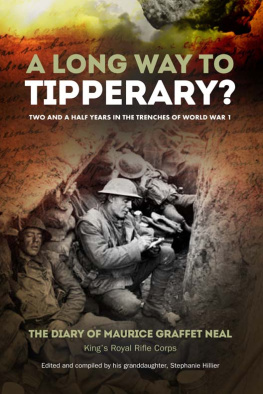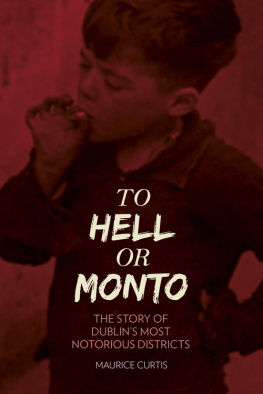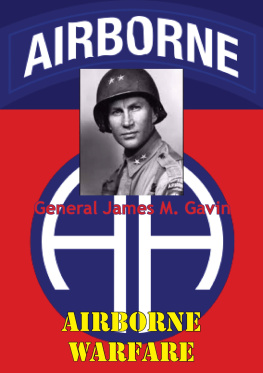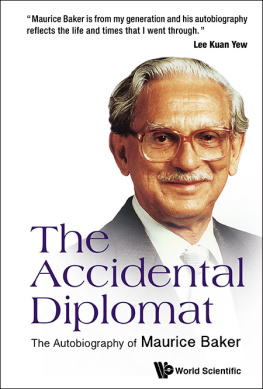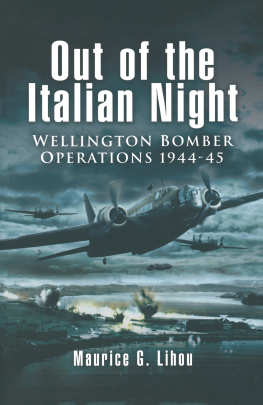
A LONG WAY TO TIPPERARY?
TWO AND A HALF YEARS IN THE TRENCHES OF WORLD WAR 1
THE DIARY OF MAURICE GRAFFET NEAL
Kings Royal Rifle Corps
Edited and compiled by his granddaughter, Stephanie Hillier
Copyright 2014 by Stephanie Hiller
Stephanie Hillier has asserted her right under the Copyright Designs and Patents Act 1988 to be identified as the author of this work.
Published by Mereo

Mereo is an imprint of Memoirs Publishing
25 Market Place, Cirencester, Gloucestershire GL7 2NX, England
Tel: 01285 640485, Email:
www.memoirspublishing.com or www.mereobooks.com
Read all about us at www.memoirspublishing.com .
See more about book writing on our blog www.bookwriting.co .
Follow us on twitter.com/memoirs books
Or twitter.com/MereoBooks
Join us on facebook.com/MemoirsPublishing%20
Or facebook.com/MereoBooks
A CIP catalogue record for this book is available from the British Library.
This book is sold subject to the condition that it shall not by way of trade or otherwise be lent, resold, hired out or otherwise circulated without the publishers prior consent in any form of binding or cover, other than that in which it is published and without a similar condition, including this condition being imposed on the subsequent purchaser.
Cover design - Ray Lipscombe
ISBN: 978-1-86151-123-2
Contents
Introduction
Maurice Graffet Neal was born at The Barracks, Barnet, Greater London on 7th September 1890. He was the second child born to his parents, Louise Anatolie (ne Graffet) and Alfred James Neal.
His elder brother, Lance Corporal Alfred Graffet Neal, died in 1908 at the age of 19 years on the island of Malta, where he was stationed with the 3rd Battalion, Kings Royal Rifle Corps. He suffered a ruptured appendix playing football whilst based at St. Georges Barracks and died of peritonitis a few days later. He was buried in the Addolorata Cemetery in Paolo, Malta.
Louise (b.1864 in Le Havre), who was fluent in the English language, had studied in London and in 1886 found a placement as governess to Colonel Terrys children in Albany Barracks, Parkhurst on the Isle of Wight, teaching French and music. It was here that she met and married Alfred James Neal, who was a Colour Sergeant at that time with the Kings Royal Rifle Corps.
Maurices father later became a Sergeant Major in the KRRs, Service Number 5295.
Maurice joined the KRRs, 1st Battalion, in 1906 at the age of 15 years (Service No: 7229) and served in Crete before the outbreak of WWI. He was 24 in 1914 when he left the Winchester Rifle Depot (Mobilization Dept.) to go to war in France, where he initially suffered two minor injuries, a bullet wound to his right arm and a leg wound. In 1917 he was severely wounded in the lower abdomen by shrapnel, which ended his active duty in the trenches.
He was invalided home and was then taken by rail to the Royal Victoria Hospital, Netley, where he endured five surgical operations. It was there that he met and later married Alice Theresa (ne Gray), a nurse with the VAD (Voluntary Aid Detachment) at the RV hospital, whose duties included assisting in the operating theatres with the disposal of amputated limbs.
During his three-year convalescent period, which was predominantly at the Royal Victoria Hospital in the newly- constructed Red Cross hospital complex, he spent some time at Countess Cairns near Romsey, Fareham House, Fareham, the New Forest etc and was discharged from service in June 1920.
Maurice and Alice had a daughter and two sons and lived all their married lives in Netley Abbey, Hampshire. After his rehabilitation, Maurice was advised to avoid any heavy work; however, initially he had no choice but to work as a labourer, finding it very difficult to find a suitable job. Later, he found employment as a valet in Green Lane, Hamble Village, Hampshire and then as a steward on board the ship Majestic of the White Star Line (sailing from Southampton to New York). He was also employed as a crew member visiting the Dardanelles and Gallipoli in 1922 and served on other passenger liners going to South America (Brazil and Argentina) and South Africa. He was finally employed at Southampton Docks carrying out office duties.
As far as I am aware, having served 13 years 314 days as a regular soldier with the KRRs, Maurice neither received a pension when his Army career ended, nor a War Disability Pension. Owing to the nature of his injuries, he had a difficult time in the 1920s and 30s providing for his children with a lack of suitable work to ensure a reasonable income. My mother told me that they had to resort to pawning their items of value when money was scarce.
Alice died in 1960 at the age of 67 and Maurice then moved to Hamble, to be near his daughter, where he died on 5th January 1971 at the age of 80. He was, by then, a grandfather and a great grandfather to my daughter.
His original account was written with pen and ink in a ledger in the form of a book with his own numerous sketches and detailed maps, plus newspaper cuttings and photographs. Apparently, the only time he ever loaned this book was to a disturbed individual who had experienced the horrors of World War I, like himself, and was constantly reliving the experience by compulsive trench-digging on waste ground at the back of the Netley Abbey Royal British Legion Club. Maurice was requested by people concerned for the poor chaps state of mind to explain to him that there was no further danger and that the war was over. He eventually coaxed him out of the trenches he had been feverishly digging. Later, he loaned him his book to read, hoping it would help.
Writing this book, after he was discharged from the Royal Victoria Hospital, must have served as a therapy for Maurice as the horrors he witnessed first-hand were undoubtedly imprinted in his memory for the rest of his life.
In 1996, an alder tree was planted in the Royal Victoria Country Park at Netley, dedicated to the memory of my grandparents, Maurice and Alice.

A soldier, 1914

Maurices 1914-18 Medals: 1914 Star and Bar (5th Aug-22nd Nov
1914), British War Medal, Victory Medal with Mention in Despatches oak leaf and round shot taken from his right arm.

The scrap of paper

The Kings Royal Rifle Corps
The Kings Royal Rifle Corps
Celer et Audax
(Swift and Bold)
Louisberg; Quebec, 1759; Martinique, 1762, 1809; Havannah; Roleia; Vimiera, Talavera, Busaco, Fuertes DOnor, Albuhera, Ciduad-Rodigo, Badajos, Salamanca, Vittoria, Pyrenees, Nivelle, Nive, Orthes, Toulouse, Peninsular, Punjaub, Mooltan, Goojerat, Delhi, Taku-Forts, Pekin, South-Africa 1851- 2 - 3, 1879, Ahmed Khel, Khandahar 1880, Afghanistan 1878-80, Egypt 1882-4, Tel-El-Kebir, Chitral, South-Africa 1899-1902.
Next page
